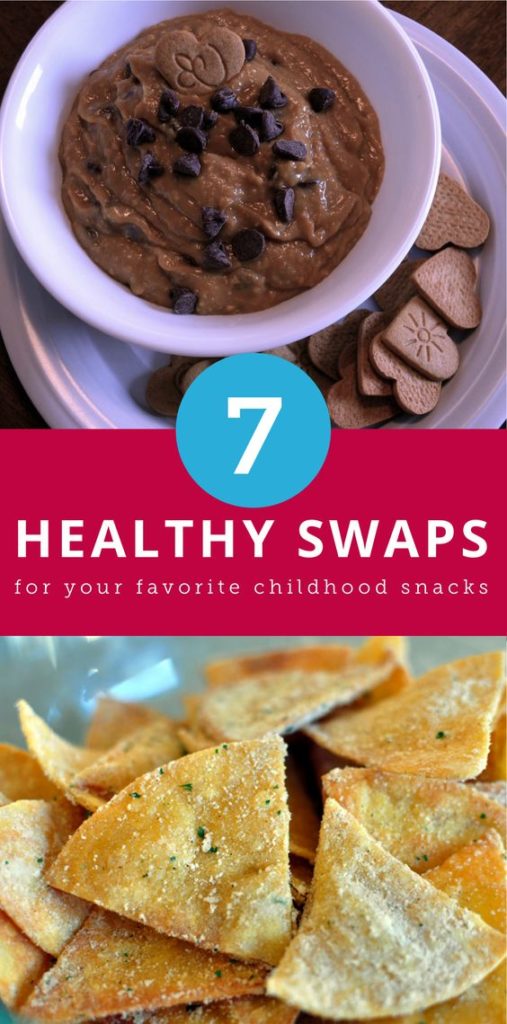40 the truth behind calorie labels
How to Read Nutrition Labels - HealthHub Nutritional data. Focus on the key nutrients that are important to you. If you are on a diet, look at the energy or calorie values. For people with high blood pressure, zoom in on the sodium value or check the saturated fat and cholesterol amounts if you have high cholesterol. Be mindful of fat content; no more than 30 per cent of your daily ... Food Label Lies: How to Sort Truth From Hype | HuffPost Life The term "naturally raised" is a voluntary (read: unregulated) label that means livestock have been raised without antibiotics and growth hormones and have not been fed animal by-products. The benefits: Foods labeled "natural" should not contain synthetic food dyes. Recent studies have linked synthetic food dyes with hyperactivity in ...
The Truth About NET Carbohydrates | DrJohnRusin.com 5. While inaccurately tracking those net carb calorie numbers aren't likely to completely derail your diet efforts, the fact is these foods still contains more calories than you may think, and when muscle gain or fat loss is the goal, calories are still king. 6. Be educated about what you are consuming, especially if your physique pays the ...
The truth behind calorie labels
The truth about food labels - delicious. magazine Also, think hard about labels that say things such as '80% fat-free'. '20%' doesn't sound quite so alluring - but that's what it means. NO ADDED SUGAR. The hope Sugar is associated with high-calorie food, so it's another of the ingredients health-conscious shoppers tend to avoid. How to read and understand a nutrition label - CNET Bold text on a nutrition label will give you a top-level overview of the nutritional values, and the indented text beneath that breaks it down further. So "Total Fat" in bold font includes grams of... Government calorie labelling plans are "dangerous" for ... - The Canary Campaigners say government plans to force restaurants to label calories in restaurants risk the health and recovery of people with eating disorders. Last week, the government announced that ...
The truth behind calorie labels. The Truth Behind Calorie Labels - YouTube An OpDoc for the New York Times. Original posting and statement here; Thank You to Dr. Rising, Ping and Dr. Pi-Sunyer as well a... Exam: 03.03 The Truth Behind the Label Flashcards | Quizlet According to FDA regulations, if a product contains 40 calories total or fewer per serving, it may be labeled A. low calorie B. reduced calorie C. no calories D. minimal calories A. low calorie According to FDA regulations, if a product claims to have "no added sugar," it means that it must contain A. fewer than 0.5g of total sugar in each serving 8 Ways Your Nutrition Label Is Misleading You - Taste of Home The main ingredients are corn syrup and sugar. 4. Fat-Free If you're looking to lose a few pounds, you might think it's smart to buy foods labeled "fat-free." But the fat-free version might actually contain more calories than its full-fat counterpart. Consistency changes when fat's removed. Lying Labels: Exposing the Truth on Calorie Counts The rounding we see on nutrition labels is actually a little non-intuitive and are rounding differently depending on whether is it greater than or less than 50 calories. If it is 50 calories or less labels round to nearest 5-calorie increment (example: round 47 calories to 45 calories). If it is above 50 calories labels round to nearest 10 ...
The Truth Behind Calorie Listings - Business Insider The actual calorie content was almost double what the label claimed: a shocking 548.4 calories. That about equates it to a McDonald's Big Mac. Casey Neistat/YouTube And finally, he put Subway to... The sneaky truth behind nutrition bars - A Healthier Michigan Men's Health suggests Larabar Cherry as a good option as the bar has just three ingredients: dates, almonds, and cherries with 190 calories, 8 grams of fat (only 0.5 grams of which is saturated fat), 4 grams of protein, 4 grams of fiber, and 21 grams of sugar. What are your favorite nutrition bars that are actually healthy? Photo credit ... Cracking The Code: The Truth Behind Food Labels "Low-calorie": 40 calories or less per serving. "High": The item contains at least 20% of the daily recommended value for that particular nutrient. "Multigrain": Made from more than one type of grain. And with that, knowledge is power. The post Cracking The Code: The Truth Behind Food Labels originally appeared on Spoon University. Fat free and 100% natural: seven food labelling tricks exposed The colour of food packaging can influence our perceptions of how healthy a food is. A recent study found consumers' perceptions of two identical chocolate bars were influenced by the colour of the...
Truth Behind The Label - Telling the true about ingredient decks ... the label you find on the back or the side of a packaged product, finished or an ingredient has the serving size, this is very important information that you must understand, i.e. a cheese cake may have the serving size of only 150g per slice, now someone who is in a hurry may grab this cake, take a quick look at the nutritional label, see the … Label Lingo: Deciphering All-Natural, GMO-Free, Organic and More No matter how many grains it claims to have (seven, 12, 20), this label does not mean it is whole-grain. Calorie Free: Each serving contains less than 5 calories. Low-calorie: Each serving contains 40 calories or less. Reduced Calorie: A product contains 25% fewer calories compared to the original item with its original serving size. The Truth Behind 10 Diet Myths - WebMD Oct. 28, 2008 -- True or false: You'll get fat if you eat at night, high fructose corn syrup makes you gain weight, and caffeine is bad for you. Those are all diet myths that got busted today in ... The Surprising Truth Behind These 22 'Healthyish' Food Claims Meat from cows that are grass-fed are naturally leaner (less fat per gram), have fewer calories than conventional meat, contain higher levels of heart-healthy omega-3 fatty acids and two to five times more conjugated linoleic acid (a type of fatty acid linked to a variety of health benefits).One thing to be aware of: the label grass-fed doesn't necessarily mean the cow spent its entire life ...
The Truth Behind Weight Loss Ads | Consumer Advice Here are some of the false promises you'll often see in weight loss ads: Lose weight without dieting or exercising. (You won't.) You don't have to watch what you eat to lose weight. (You do.) If you use this product, you'll lose weight permanently. (Wrong.) To lose weight, all you have to do is take this pill. (Not true.)
The Truth about Calorie Counting for Weight Loss- Erbology The truth behind calorie counting for weight loss is that one size does not fit all. Therefore the same food can impact people in very different ways. Overall, calorie counting should not be the be-all and end-all. It's much more helpful to understand your own body and your own unique nutritional needs.
Nutrition labels can be confusing, here's how to read them DV is based on the assumption that you eat 2,000 calories daily. The label then lets you know what percent of needed intake of a nutrient one serving provides. For example, if it says "Vitamin D 10...
The Truth Behind the Misleading Labels on Food Packaging This means the product has 50% less fat than its original product and/or the calories have been reduced by at least 33%. Be wary of the claim of "light" correlating to lighter color or flavor, though. Light olive oil and light brown sugar both indicate a less intense flavor and lighter colors respectively, not lighter in calories or fat content.
Phil Kaplan discusses Truth Behind Fat-Free Foods Here's how they get away with it . . . The FDA labeling law says that if there's less than 1/2 gram of fat in a serving, a food can be labeled "Fat-Free." The catch is, nobody regulates what the food companies refer to as a serving size. If you look at the spray can, it refers to a serving as .2 grams. That's 2/10 of a gram.
Why FDA Nutrition Label Regulations Fail Consumers The FDA should abolish "less than" rules. Zero should mean zero. If there could be 0.5 grams of trans fats per serving, the label should say exactly that: "Trans fats: Up to .5 g per serving." A "1 can" serving should include all the contents of that can, especially since the ingredients list confirms what is actually inside.
The Truth About Food Labels - ABC News A University of Minnesota study showed that 91 percent of shoppers often bypass the calorie count before buying an item. That's bad: If each meal exceeds your energy needs by just 170 calories, you can gain a pound a week. Fat Plenty of men still assume that if a food is low in fat, it's good for them and vice versa. Far from it, says Dr. Katz.
Nutrition 911: Misleading Labels | Muscle & Fitness The results: 60 percent said they search for a "natural" food label when shopping. Two-thirds of the survey said people believe that "natural" means that a food is made without any artificial ingredients, pesticides, and GMOs. Even GMO-containing foods may have the "natural" label. Given the survey and no-formal standing definition, what do you do?

9 Low-Calorie Mistakes You're Probably Making via Huffington Post Healthy Living. Lauren Harris ...
The Truth Behind Food Labels and Food Health Claims In "trans-fat-free" products, manufacturers can label their goods as having no trans fat as long as it contains less than 0.5g per 100g. If you spot partially hydrogenated oil or shortening in the ingredients list, it is nearly always an indication of the presence of trans fat, which is harmful to your heart.
The Truth Behind Nutrition Labels - mint The truth behind nutrition labels. Explore. Sign in e-paper. Sunday, 29 May 2022 ... list of ingredients present and nutrition information—including total calories (energy value) as well as ...
How to Decode a Nutrition Label - Healthline In fact, when the current nutrition facts label was first established in 1990, it was intended as a tool to inform Americans about the ingredients and nutrients our foods contain — and to verify...
Government calorie labelling plans are "dangerous" for ... - The Canary Campaigners say government plans to force restaurants to label calories in restaurants risk the health and recovery of people with eating disorders. Last week, the government announced that ...
How to read and understand a nutrition label - CNET Bold text on a nutrition label will give you a top-level overview of the nutritional values, and the indented text beneath that breaks it down further. So "Total Fat" in bold font includes grams of...
The truth about food labels - delicious. magazine Also, think hard about labels that say things such as '80% fat-free'. '20%' doesn't sound quite so alluring - but that's what it means. NO ADDED SUGAR. The hope Sugar is associated with high-calorie food, so it's another of the ingredients health-conscious shoppers tend to avoid.











Post a Comment for "40 the truth behind calorie labels"